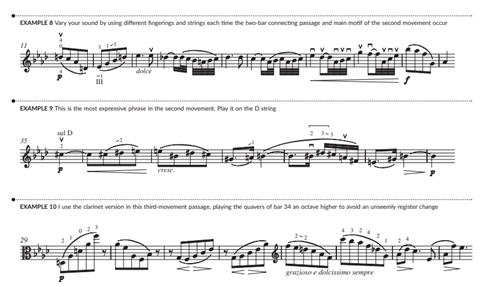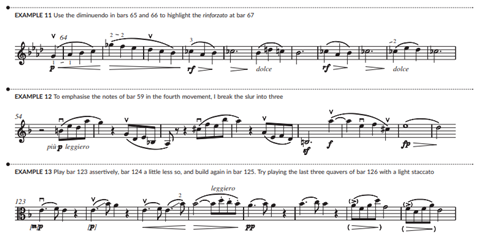In this extract from August 2015, violist Rainer Moog guides us through the nostalgic second movement of op.120 no.1

This is an extract from the August 2015 Masterclass: Rainer Moog on Brahms’s Viola Sonata in F minor op.120 no.1. To read the full article, click here
Second movement
The main motif of the second movement comes five times, and we must find five varying ways to shape it. Play the first, marked poco forte, on the A string; then you can do the dolce repetition on the D string. The two connecting bars also come twice in the movement: first in bars 11–12 (example 8) and again in bars 59–60. Use different fingerings to give contrast: play once with a portamento and once staying in position, with the first note stopped or as a harmonic.

For the demi semiquavers in bars 17–18 and elsewhere, the separate notes should sound like legato.Use an open sound in first position for the dotted motif in bar 24, then play its repetition in bar 26 almost non-espressivo. I recommend a change of string between bars 28 and 29 to emphasise the subito piano at the end of the crescendo. In bar 30 I do a portamento between the E and the F sharp to emphasise this phrase’s special quality; I break the slurs in bars 31–32, then play the two following pianissimo bars with one bow for each. The phrase starting in bar 35 is the most intensely expressive in the whole movement (example 9), and I play it on the D string.
When the main theme returns in the lower octave in bar 49, marked piano espressivo, play mezzo piano or even mezzo forte and enjoy your viola’s full, dark sound. Resist crescendoing into bar 58: the phrase continues in the piano, so there is no need. In bar 72, the viola stays in pianissimo although the piano crescendos; the pianist must be careful. Play the last phrase as softly as you dare.

Read: Clarinet or viola? The history of Brahms op.120
Read: Masterclass: Antoine Tamestit on Brahms Viola Sonata op.120 no.1 first and second movements











































No comments yet